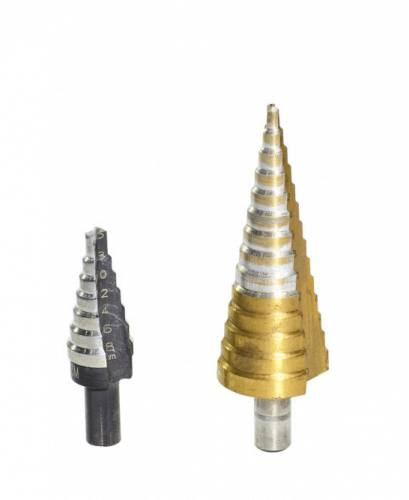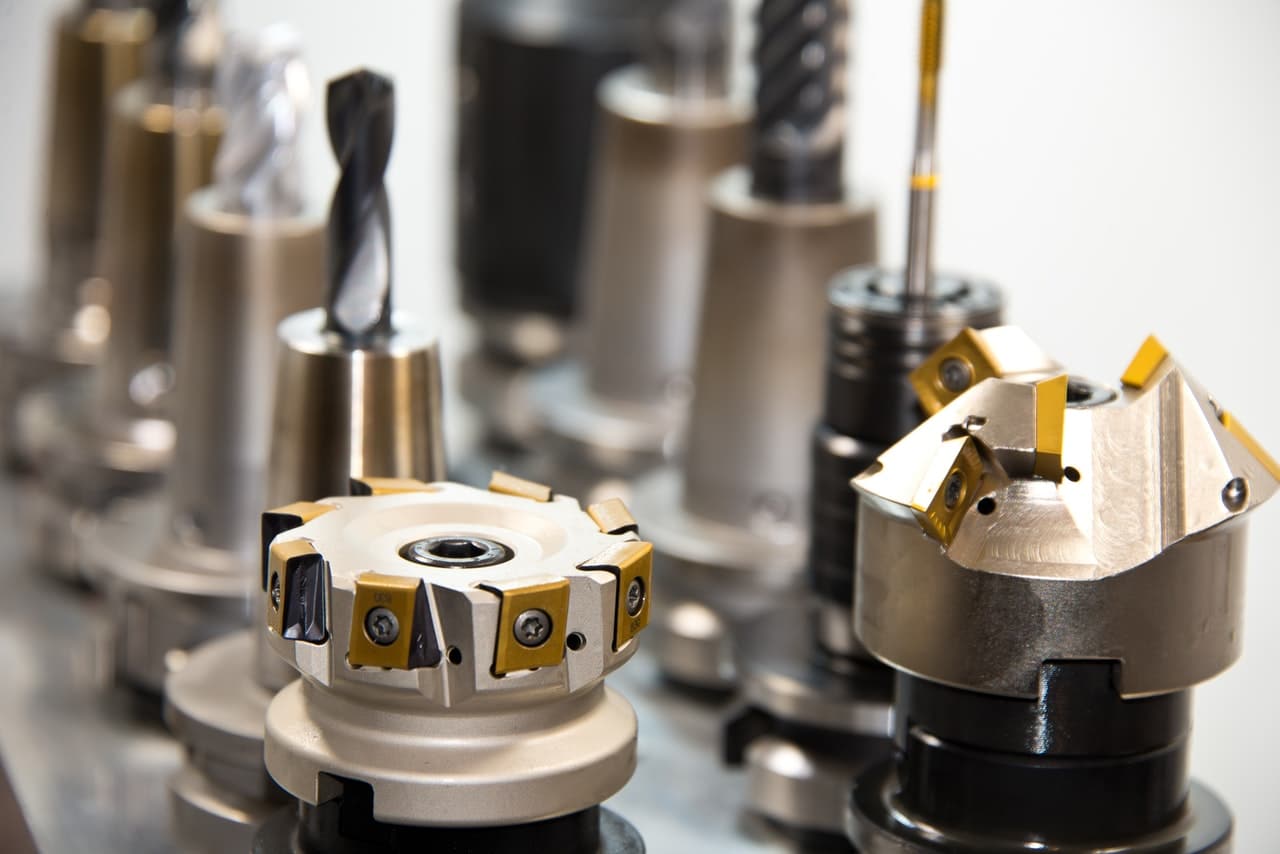Step drill bits are special kinds of drill bits that vary in diameter from their tip to their base. They resemble miniature pine trees. These drill bits have tips that are ground to a different diameter so that they can be used for variable diameter holes. In between the base and tip, there are several steps that are larger than the last from tip to base.
There are two types of drill bits. The first is the counter-bore, which is structured like a straight slide between the ground diameter and the original diameter. The second step drill bit is angled and hence is called a countersink.
Most step drill bits are custom made for different applications. This makes them expensive. Step drill bits are usually ground down to a tip diameter of ¼”. These step drill bits are designed to enlarge the hole they’ve made. Most step drill bits are made for metal sheets and/or wood.
Using Step Drill Bits

The basics of using a step drill bit are quite simple. You need only to follow these steps.
Wear Protection
You must remember that even if you’re drilling in wood, there is a chance that wood shavings and splinters will fly in your face.
Hence, you should always wear eye protection in the form of goggles before you start drilling.
You should also wear gloves so that any shavings or bits that ricochet off the surroundings or tablets don’t damage your hands.
Also, make sure that the electrical outlet you’ve plugged into is secure. Sometimes, when you’re working, you fail to notice that the wiring in the outlet is hanging out or loosely held.
Don’t throw caution to the wind when working with power tools. It’s always best to delay work in favor of safety.
Know Which Surface You’re Working On
If you’re working on metal, wood, or even an alloy, you need different step drill bits for them. You’ll need a separate step drill bit for stainless steel, a separate step drill bit for wood, and a separate one for aluminum or iron.
Place the Step Drill Bit Where You Need the Hole
You need to place the tip of the center punch at the exact spot where the hole is to be drilled. When you have the precise location, you should hit the blunt end of the center punch with a hammer. This will provide a clear place for the drill bit to be placed and caught. It will ensure that the drill bit doesn’t sway so that you can work in the right location.
Precision is important in handiwork. If the position and exact size of the hole aren’t precise, then what is the point of the drill bit?
Secure the Bit into the Drill Motor and Run it
Proceed to secure the small step drill bit into the drill motor chuck. Apply tapping and cutting fluid to the center mark generously.
Make sure the drill bit is aligned with the center mark and press down on the drill trigger. Make sure you run the small drill bit all the way through the metal sheet or wooden sheet.
After you’re done, replace the small drill bit with the larger one. Then, proceed to align the large drill bit with the hole drilled. the drill to bore the large drill bit into the hole. This will create a further depression
Take Regular Intervals
You should know that it’s not wise to put constant pressure on the drill bit. Hence, you should take regular breaks while you’re drilling the hole. This is not only to give pause to the motor, but it is also to apply some tapping fluid so that the drill is kept cool. If it overheats, it can create sparks or damage the surrounding material.
It is also because some additional cutting and finishing is needed for the hole to be precisely cut. When the hole has reached the diameter required, you should promptly stop.
Removal & Cleaning
After your work is done, you can remove the large step drill bit from the motor. Then, you should proceed to clean all the drill bits and the motor to remove any metal shavings. These metal shavings should be cleaned from the hole that you’ve drilled as well.
If you’re using a step drill bit for metal, it should also be well polished before it is put away. You can also use the drill bit container if you have one. It will definitely secure the drill bits more properly for further usage.
Pros and Cons of Step Drill Bits
There are definitely a lot of advantages to using a step drill bit. However, there are always cons to pros. And you need to know them if you’re to become a master of using them.
Pros
- You will get very clean holes when you use a step drill bit. Unlike drill a hole with a normal drill bit or cutting one with a hand tool, this will be much more precise. Very little clean up will be required after.
- Step drill bits are also very fast at drilling precise holes. Their variable diameters allow for them to form large holes much faster than normal drill bits.
- They work extremely well on sheet metal.
- They have the advantage of being several variable sizes-in-one. Hence, there is no need to attach, detach, and reattach several different drill bits of varying diameter.
- The lower acute cut angle that is a feature of the step drill bit makes it easy to drill into soft materials. This includes aluminum, brass, and even plastics.
Cons
- Sharpening drill bits is very difficult. Sharpening tips for DIY enthusiasts are available around the web, but they require a very steady hand and some professional experience. It’s not something a novice can do.
- Since most step drill bits are 1/4” inch thick, they work on thin stock.
- Pilot holes need to be drilled before step drill bits can be fully effective. Hence, they do require some preparation before they’re to be used.
- Step drill bits are constructed for specific purposes, or custom made. Hence, they tend to be more expensive than normal drill bits. You will need to splurge even more for high-quality drill bits.
- Not suitable for many other materials rather than metals or alloys.
- If one step of the step drill bit is damaged, all of it needs to be replaced. It can’t be machined or fixed, it needs to be replaced. You can only continue working with it up to the damaged bit. Anything beyond it will result in shoddy craftsmanship.
Step drill bits are great tools for designing and machining. However, they do require some expertise and know-how in order to be used well.





